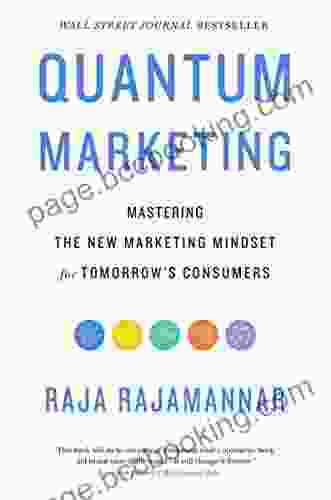Industrial Competitiveness and Design Evolution: Evolutionary Economics and Innovation

In today's rapidly evolving global economy, businesses face immense pressure to stay competitive. Innovation has emerged as a crucial driver of success, and design plays a pivotal role in fostering innovation and driving economic growth. This article delves into the fascinating relationship between industrial competitiveness and design evolution, exploring the evolutionary economics perspective on how design innovation fuels economic success.
4.5 out of 5
| Language | : | English |
| File size | : | 23207 KB |
| Text-to-Speech | : | Enabled |
| Screen Reader | : | Supported |
| Enhanced typesetting | : | Enabled |
| Word Wise | : | Enabled |
| Print length | : | 450 pages |
The Evolutionary Economics Perspective
Evolutionary economics, a branch of economics that draws inspiration from evolutionary biology, argues that economic systems, like biological organisms, are constantly evolving and adapting to their environment. This perspective emphasizes the role of innovation, knowledge creation, and learning as key drivers of economic growth.
In the context of industrial competitiveness, evolutionary economics suggests that design innovation is a crucial mechanism for firms to adapt to changing market conditions and gain a competitive advantage. Design innovation encompasses not only the aesthetic aspects of a product but also its functionality, usability, and sustainability.
Design Evolution as a Driver of Economic Growth
Design evolution, the process by which designs improve and adapt over time, plays a significant role in economic growth. By creating new products, services, and experiences that meet evolving consumer needs, design innovation generates economic value and creates new markets.
For example, the development of the smartphone has transformed the telecommunications industry, creating a vast ecosystem of new products, services, and applications. Similarly, the rise of electric vehicles is driving advancements in battery technology and charging infrastructure, stimulating economic growth in the automotive sector and related industries.
The Role of Design in Industrial Competitiveness
Design innovation is a key factor in determining a firm's competitive position in the market. Companies that embrace design as a strategic tool can gain significant advantages, including:
- Differentiation: Design can help differentiate a product or service from competitors, creating a unique value proposition for customers.
- Customer loyalty: Well-designed products and services enhance user experience, leading to increased customer satisfaction and loyalty.
- Increased market share: Innovative designs can attract new customers and expand market share.
- Improved productivity: Design can optimize production processes, reduce costs, and improve efficiency.
- Sustainable competitive advantage: Design-driven companies can establish a sustainable competitive advantage based on their ability to innovate and adapt to changing market needs.
Case Studies of Design-Led Success
Numerous real-world examples demonstrate the transformative power of design in driving industrial competitiveness:
- Apple: Apple's iconic design has played a crucial role in its success, creating a loyal customer base and consistently setting industry standards for product design.
- Nike: Nike's focus on innovation in athletic footwear and apparel has helped them become a global leader in the sportswear industry.
- IKEA: IKEA's emphasis on functional, affordable design has enabled them to become a dominant force in the furniture market worldwide.
The evolutionary economics perspective provides valuable insights into the relationship between industrial competitiveness and design evolution. By embracing design innovation as a strategic tool, businesses can adapt to changing market conditions, gain a competitive advantage, and drive economic growth.
As the global economy continues to evolve, the importance of design innovation will only increase. Companies that invest in design and foster a culture of creativity will be well-positioned to succeed in the competitive landscape of the future.
4.5 out of 5
| Language | : | English |
| File size | : | 23207 KB |
| Text-to-Speech | : | Enabled |
| Screen Reader | : | Supported |
| Enhanced typesetting | : | Enabled |
| Word Wise | : | Enabled |
| Print length | : | 450 pages |
Do you want to contribute by writing guest posts on this blog?
Please contact us and send us a resume of previous articles that you have written.
 Book
Book Novel
Novel Page
Page Chapter
Chapter Text
Text Story
Story Genre
Genre Reader
Reader Library
Library Paperback
Paperback E-book
E-book Magazine
Magazine Newspaper
Newspaper Paragraph
Paragraph Sentence
Sentence Bookmark
Bookmark Shelf
Shelf Glossary
Glossary Bibliography
Bibliography Foreword
Foreword Preface
Preface Synopsis
Synopsis Annotation
Annotation Footnote
Footnote Manuscript
Manuscript Scroll
Scroll Codex
Codex Tome
Tome Bestseller
Bestseller Classics
Classics Library card
Library card Narrative
Narrative Biography
Biography Autobiography
Autobiography Memoir
Memoir Reference
Reference Encyclopedia
Encyclopedia Olan Thorensen
Olan Thorensen Paul Beatty
Paul Beatty Norman Bridwell
Norman Bridwell Nintendo
Nintendo Patty Civalleri
Patty Civalleri Sharon Ward
Sharon Ward William H Shellenberger
William H Shellenberger Robin Yardi
Robin Yardi Yvonna S Lincoln
Yvonna S Lincoln Peter Lightbown
Peter Lightbown Rudolf Steiner
Rudolf Steiner Odette Lienau
Odette Lienau Travis Wayne Goodsell
Travis Wayne Goodsell Sam Jalloh
Sam Jalloh Rachel Riley
Rachel Riley Peter Lourie
Peter Lourie Sharmila Sen
Sharmila Sen Shauna L Shapiro
Shauna L Shapiro Sarah Helm
Sarah Helm Robert Kirkman
Robert Kirkman
Light bulbAdvertise smarter! Our strategic ad space ensures maximum exposure. Reserve your spot today!

 Jack LondonUnleash Your Creativity with Acrylic Paint Pouring: A Comprehensive Guide for...
Jack LondonUnleash Your Creativity with Acrylic Paint Pouring: A Comprehensive Guide for...
 Mikhail BulgakovThe Unveiling of "Red Flower of China": An Autobiography that Captivates and...
Mikhail BulgakovThe Unveiling of "Red Flower of China": An Autobiography that Captivates and...
 Chad PriceUnveiling the Life and Legacy of Shaikh Isa Ardalan: The Last Grand Mufti of...
Chad PriceUnveiling the Life and Legacy of Shaikh Isa Ardalan: The Last Grand Mufti of... John ParkerFollow ·16k
John ParkerFollow ·16k Rudyard KiplingFollow ·18.9k
Rudyard KiplingFollow ·18.9k Mikhail BulgakovFollow ·2.2k
Mikhail BulgakovFollow ·2.2k Pablo NerudaFollow ·4.7k
Pablo NerudaFollow ·4.7k Calvin FisherFollow ·16.6k
Calvin FisherFollow ·16.6k Ivan CoxFollow ·13.8k
Ivan CoxFollow ·13.8k Boris PasternakFollow ·7.9k
Boris PasternakFollow ·7.9k Juan RulfoFollow ·4.1k
Juan RulfoFollow ·4.1k

 Marvin Hayes
Marvin HayesGoverning Law for Law School and Bar Exam Prep: Your...
Unlock the Secrets of...

 Sidney Cox
Sidney CoxUnveiling the Epic Tales of Whiskey, War, and Military...
In the tapestry of history,...

 Victor Turner
Victor TurnerGoverning Law for Law School and Bar Exam Prep: The...
What is Governing...

 Robert Browning
Robert BrowningSterling Test Prep MCAT General Chemistry Practice...
: Embark on Your MCAT General Chemistry...
4.5 out of 5
| Language | : | English |
| File size | : | 23207 KB |
| Text-to-Speech | : | Enabled |
| Screen Reader | : | Supported |
| Enhanced typesetting | : | Enabled |
| Word Wise | : | Enabled |
| Print length | : | 450 pages |










